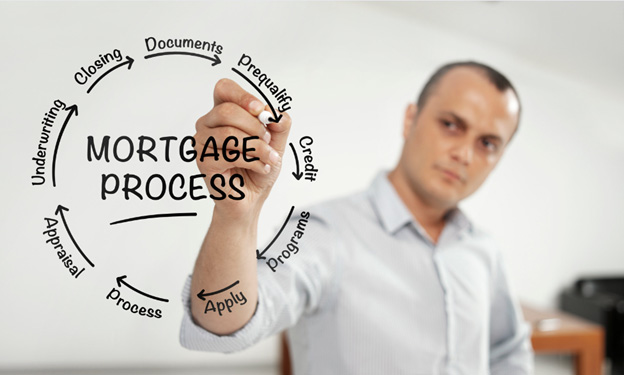How the Purchase and Refinance Mortgage Process Works
 The purchase and refinance mortgage processes are similar in many ways, but there are also some important differences. Here is a general overview of how each process typically works:
The purchase and refinance mortgage processes are similar in many ways, but there are also some important differences. Here is a general overview of how each process typically works:
Purchase Mortgage Process
Determine your budget: Before you start shopping for a home, you need to figure out how much you can afford to spend. You can do this by calculating your monthly income, expenses, and debt, and getting pre-approved for a mortgage.
Find a property: Once you know your budget, you can start looking for homes that fit your criteria, whether that’s size, location, or other factors.
Make an offer: When you find a property you like, you can make an offer to buy it. This offer will include the price you’re willing to pay and any contingencies, such as inspections or financing.
Get a mortgage: If your offer is accepted, you’ll need to apply for a mortgage loan to pay for the property. You’ll need to provide documentation about your income, assets, and credit history.
Close the loan: Once your mortgage is approved, you’ll need to attend a closing to finalize the sale. This involves signing a lot of paperwork and paying closing costs, such as appraisal fees and title insurance.
Refinance Mortgage Process
Determine your goals: Before you start the refinance process, you need to determine why you want to refinance. Some common reasons include lowering your monthly payments, shortening your loan term, or cashing out equity.
Gather documentation: To refinance, you’ll need to provide documentation about your income, assets, and credit history, just like you did when you applied for your original mortgage.
Choose a lender: Once you have your documentation in order, you can start shopping around for a lender who offers the type of refinance you want, such as a rate-and-term refinance or a cash-out refinance.
Apply for the loan: After you choose a lender, you’ll need to submit a loan application and provide documentation to support your refinance goals.
Close the loan: Once your refinance is approved, you’ll need to attend a closing to finalize the loan. This involves signing paperwork and paying closing costs, such as appraisal fees and title insurance.
The purchase and refinance mortgage processes involve similar steps, but the specifics can vary depending on your situation and the type of loan you’re applying for. It’s important to work with a trusted lender who can guide you through the process and help you make informed decisions about your mortgage.
What are the Differences Between Purchasing and Refinancing a Home
While purchasing a home and refinancing a home both involve obtaining a mortgage, there are several key differences between the two processes. The primary goal of purchasing a home is to buy a property to live in or as an investment. The primary goal of refinancing a home is to replace an existing mortgage with a new one that offers more favorable terms.
The purchase process involves finding a property, making an offer, and going through the home buying process. Refinancing involves working with an existing mortgage lender or a new lender to replace an existing mortgage with a new one.
The timing of a home purchase is largely determined by the real estate market and the availability of properties that meet the buyer’s criteria. The timing of a refinance is largely determined by the borrower’s financial goals and the current interest rate environment.
Ultimately, the best decision for you will depend on your individual financial situation and goals. It is recommended to reach out to a real estate agent or mortgage originator who can provide personalized advice and guidance based on your specific needs and circumstances.

 If you are in the process of purchasing a home, it is critical for you to make sure that you budget appropriately. Unfortunately, there are a lot of people who commonly overlook closing expenses. Even though it is important for you to have enough money for your down payment, you need to make sure you cover closing costs as well. What is included in closing costs, and how much money do you need to budget?
If you are in the process of purchasing a home, it is critical for you to make sure that you budget appropriately. Unfortunately, there are a lot of people who commonly overlook closing expenses. Even though it is important for you to have enough money for your down payment, you need to make sure you cover closing costs as well. What is included in closing costs, and how much money do you need to budget? There are many people who are thinking about buying a home for the first time. Even though this is an exciting experience, there are also people who develop anxiety when purchasing a home. This is a major financial decision, and it is critical to get it right. What do people need to do if they want to overcome anxiety as first-time homebuyers?
There are many people who are thinking about buying a home for the first time. Even though this is an exciting experience, there are also people who develop anxiety when purchasing a home. This is a major financial decision, and it is critical to get it right. What do people need to do if they want to overcome anxiety as first-time homebuyers?